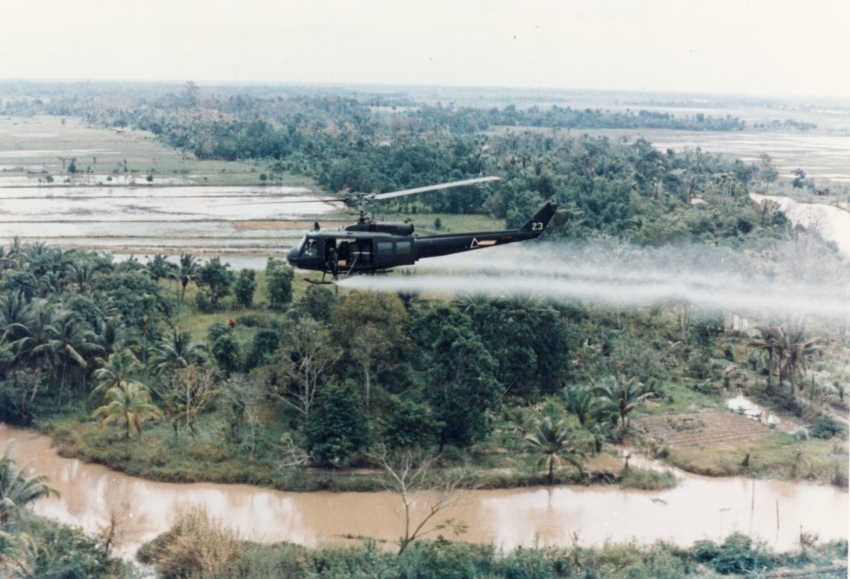
WASHINGTON, D.C. – U.S. Secretary of Veterans Affairs Dr. David J. Shulkin on Wednesday announced that he is considering possible new presumptive conditions that may qualify for disability compensation for veterans related to Agent Orange exposure.
“After thoroughly reviewing the National Academy of Medicine (NAM)’s latest report regarding Veterans and Agent Orange, and associated data and recommendations from the NAM Task Force, I have made a decision to further explore new presumptive conditions for service connection that may ultimately qualify for disability compensation,” Secretary Shulkin said. “I appreciate NAM’s work and the commitment and expertise of VA’s NAM Task Force, and look forward to working with the Administration on the next steps in the process.”
⇒Link to the NATIONAL ACADEMIES PRESS online version of the full 2014 Veterans and Agent Orange Report (1,084 pages)
The Department of Veterans Affairs will now begin work with the Administration to concurrently conduct a legal and regulatory review of these potential presumptive conditions, including inflammatory diseases, hypertension, and certain types of cancer, for awarding disability compensation to eligible veterans.
Any ailments Shulkin should approve to the VA’s list of 14 “presumptive diseases” linked to herbicide exposure would make many more thousands of Vietnam War veterans eligible for VA disability compensation and health care.
The VA has recognized certain cancers and other health problems as presumptive diseases associated with exposure to Agent Orange or other herbicides during military service. Veterans and their survivors may be eligible for compensation benefits:
- AL AmyloidosisA rare disease caused when an abnormal protein, amyloid, enters and collects tissues or organs
- Chronic B-cell LeukemiasA type of cancer which affects a specific type of white blood cell
- Chloracne (or similar acneform disease)A skin condition that occurs soon after exposure to chemicals and looks like common forms of acne seen in teenagers. Under VA’s rating regulations, it must be at least 10 percent disabling within one year of exposure to herbicides.
- Diabetes Mellitus Type 2A disease characterized by high blood sugar levels resulting from the body’s inability to produce or respond properly to the hormone insulin
- Hodgkin’s DiseaseA malignant lymphoma (cancer) characterized by progressive enlargement of the lymph nodes, liver, and spleen, and by progressive anemia
- Ischemic Heart DiseaseA disease characterized by a reduced supply of blood to the heart, that can lead to chest pain (angina)
- Multiple MyelomaA cancer of plasma cells, a type of white blood cell in bone marrow
- Non-Hodgkin’s LymphomaA group of cancers that affect the lymph glands and other lymphatic tissue
- Parkinson’s DiseaseA progressive disorder of the nervous system that affects muscle movement
- Peripheral Neuropathy, Early-OnsetA nervous system condition that causes numbness, tingling, and muscle weakness. Under VA’s rating regulations, it must be at least 10 percent disabling within one year of herbicide exposure.
- Porphyria Cutanea TardaA disorder characterized by liver dysfunction and by thinning and blistering of the skin in sun-exposed areas. Under VA’s rating regulations, it must be at least 10 percent disabling within one year of exposure to herbicides.
- Prostate CancerCancer of the prostate; one of the most common cancers among older men
- Respiratory Cancers (includes lung cancer)Cancers of the lung, larynx, trachea, and bronchus
- Soft Tissue Sarcomas (other than osteosarcoma, chondrosarcoma, Kaposi’s sarcoma, or mesothelioma)A specific group of malignant of cancers in body tissues such as muscle, fat, blood and lymph vessels, and connective tissues
The conversation around Agent Orange exposure has heightened since Sen. John McCain’s diagnosis in July of glioblastoma, an aggressive form of cancer. During the Vietnam war, the military sprayed millions of gallons of the herbicide in Vietnam to kill enemy-covering jungle brush, and in the process, may have exposed as many as 2.6 million U.S. service members to potential repercussions — including McCain.







